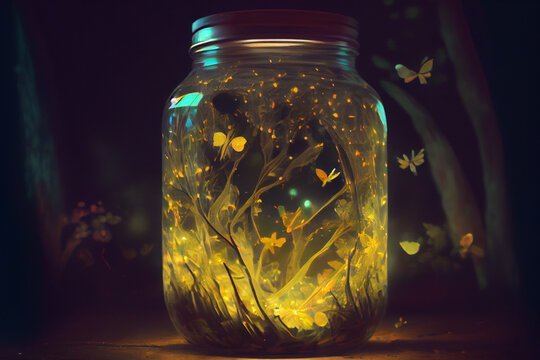The Shocking Truth About How Fireflies Light Up!
Discover the shocking truth about how fireflies light up in this fascinating video! Fireflies have always intrigued us with their magical glow, but have you ever wondered how they produce light?
How Do Fireflies Light Up?
Fireflies use a glowing chemical reaction to communicate with each other in the dark of evening and night.
The Glow of Fireflies
The firefly's light-producing organ, known as the lantern, helps them glow to ward off predators and attract mates.
One of the classic signs of summer in parts of the U.S. is the sight of fireflies twinkling in the night. Fireflies produce their own light through a process called bioluminescence, which is seen in some animals, bacteria, and fungi worldwide. Most of these creatures live in caves or oceans, but a few, including over 2,000 species of fireflies, live where humans can observe them.
The Science Behind the Glow
Fireflies (family Lampyridae), also called lightning bugs, create their light through a chemical reaction involving a compound called luciferin, explains Timothy Fallon, a biochemical geneticist at the University of California, San Diego.
Luciferin produces light by losing electrons—a process called oxidation—in the presence of adenosine triphosphate (ATP), which provides energy for cells, and magnesium. The enzyme luciferase facilitates this reaction. Fireflies have light organs in their abdomens where this reaction occurs, containing a layer of crystallized uric acid that helps reflect and enhance the light.
This luciferin-luciferase system has independently evolved multiple times in different bioluminescent animals, including another group of glowing beetles called Sinopyrophoridae.
Historical Understanding of Bioluminescence
Only in the past few centuries have scientists begun to understand how some living organisms produce light. A significant breakthrough came from a 17th-century Royal Society member in Oxford who discovered that air was necessary for a bioluminescent fungus to glow. Oxygen is indeed a key ingredient for firefly bioluminescence.
Early Light in Fireflies
Fireflies start glowing early in their life stages. Pupae and even eggs can produce light, possibly as a warning to predators that they are not good to eat, as some are toxic due to chemicals called lucibufagins, synthesized from their diet. When fireflies mature into adults, they develop new light organs. But the overall system remains the same, with light coming from special cells in their light organs, making them glow yellow, orange, green, or even blue.
These cells are packed with luciferin and luciferase and contain many mitochondria, which generate the ATP needed for the chemical reaction. Fireflies control their light by regulating oxygen flow to these cells. No oxygen means darkness, while a lot of oxygen means a glow.
The Role of Light in Mating
This ability to turn their light on and off is crucial for East Coast U.S. fireflies that use flashing signals to find mates. Each species has developed its own light pattern to distinguish itself from others, making bioluminescence a "Morse code love song in light," says Lynn Faust, an independent firefly researcher in Knoxville, Tennessee. With their very short adult lives, finding a mate is a race against time.
Ongoing Research and Conservation
Researchers have made significant progress in understanding firefly bioluminescence. However, many firefly species in Asia and Africa remain undocumented, and scientists are still trying to understand how beetles first developed this glowing ability 130 to 140 million years ago, according to research published on the preprint database BioRxiv.
"The biggest unanswered questions are what genes are involved in bioluminescence?" says Fallon.
A major breakthrough occurred in 1985 when researchers identified the gene responsible for making luciferase. This enzyme is now used in biomedical research to light up specific proteins in plants and animals. In 2024, researchers in Wuhan, China discovered two more genes in Aquatica leii, a rare aquatic firefly, that might help position the lantern in the abdomen and enable light-producing genes like luciferase.
Scientists are still learning about fireflies' behavior in the wild. Recent years have seen a decline in firefly numbers due to light pollution, habitat loss, and climate change. "We know so little about fireflies in their natural habitat," Faust says. "How can we conserve and protect them if we barely understand their basic needs?"
What's Your Reaction?
























